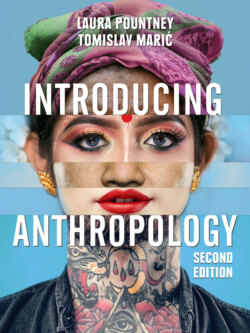Читать книгу Introducing Anthropology - Laura Pountney - Страница 56
How Do Humans Vary? The Concept of Race and a Critique of the Concept Biological differences between humans
ОглавлениеIt is now agreed that Homo sapiens evolved from one of many types of early human and then spread around the world, interacting with other forms such as Neanderthals and gradually displacing these other types, though continuing to carry the genetic material from other early humans.
From research into the DNA of modern humans, there is increasing evidence that early humans mixed and had sex, and that this tended to be more likely between neighbouring groups. Using genetic information, it is now possible to investigate people’s ancestry as well as trace their movements. For example, it has been found that 95 per cent of Icelandic men have Norse ancestry, whereas 85 per cent of Icelandic women have Celtic ancestry, which indicates that they had relations with Celtic men on their way to Iceland. This kind of information tells us a lot about the kinds of social relationships occurring between groups.
It is clear that there are some physical differences between human groups. These are based on minor genetic differences and the variations that have arisen further from these lineages. For example, we know that Inuit are different from Australians, and no one confuses the !Kung San hunter-gatherers from the Kalahari desert with the Bantu farmers. Therefore ancestry, in biological terms, refers simply to specific genetic lineage.
In wider society, the concept of race has been interpreted in a number of ways. During the nineteenth century there were several attempts to create stratified categories of race along the lines of perceived (or given) physical and intellectual differences between various social groups. Often, these categories were created to reflect power differences.
